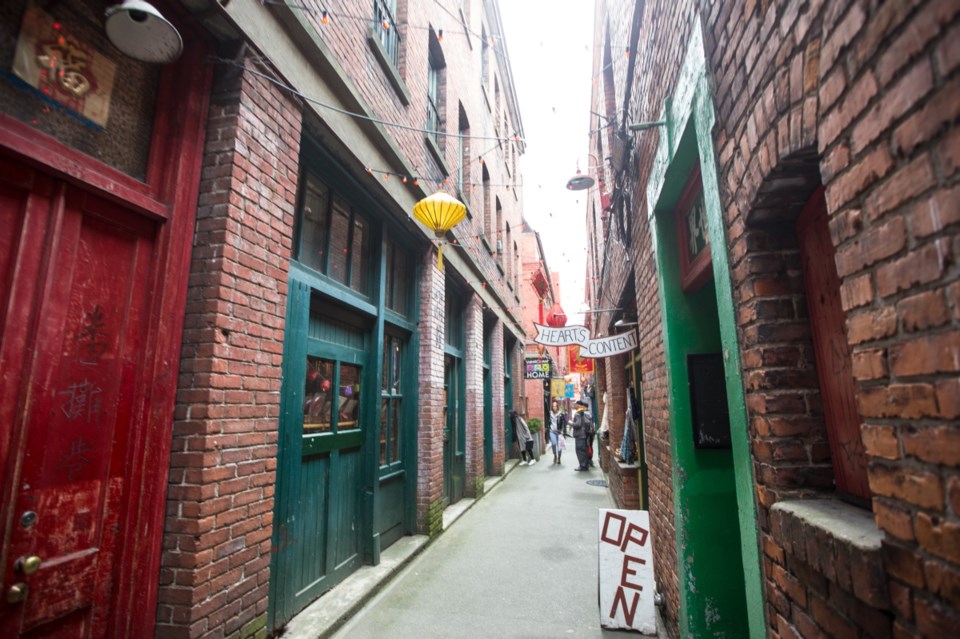In 2009, the summer she interned at the Times Colonist, reporter Ann Hui chucked a hand grenade in the pool.
Victoria’s Chinatown was not so much a place where people of Chinese background could lead their daily lives, she wrote, as it was “an exercise in ethnic amusement” for tourists. This opinion did not make her universally popular.
Ten years later, the question of authenticity remains central to Hui’s writing. At least, it’s central to her new book, Chop Suey Nation.
Chop Suey Nation follows Hui, now the Globe and Mail’s food writer, as she drives from Victoria to Fogo Island, a tiny outpost off the tip of Newfoundland, in search of an understanding of Canada’s small-town Chinese restaurants and the people who run them.
It’s a fascinating journey, beginning with a starting point that was more than geographical: When she grew up in the Lower Mainland, it was constantly reinforced to Hui that “fake” Chinese food — the chop suey dishes familiar to all Canadians but no one in China — was to be looked down upon. Chicken balls, spring rolls, fried rice. Deep-fried dishes heavily flavoured with salt and thick, sweet sauces.
She found plenty of that on her 2016 road trip, along with regional variations. At this end of the country we eat ginger beef, a dish whose roots go back to 1970s Calgary. In Glendon, Alta., a Vietnamese woman sold “Chinese pierogis” to customers of Ukrainian descent. In Timmins, Ont., Chinese food comes with a side of toast. In Newfoundland, chow mein is made with thinly sliced cabbage, due to the difficulty in finding egg noodles when the cuisine first arrived there.
That last example illustrated a common challenge for the newcomers who opened Canada’s first Chinese restaurants: an absence of traditional ingredients. “They basically created a cuisine out of nothing,” Hui says, on the phone from Toronto. “This is food that was created by these early Chinese immigrants — mostly men — who were not trained cooks.” Facing systemic racism in some sectors, they opened restaurants because those were the jobs that, with limited English and no formal training, they could create for themselves. It was a toehold in Canada. It showed endurance, perseverance.
That’s where Chop Suey Nation finds its heart. It becomes less about the food the restaurants serve than the people who run them. And no, this is not just a story of the past. Canada’s chop suey eateries are thriving.
“I thought these restaurants would be disappearing,” Hui says. That wasn’t the case. Many have been taken over by their founders’ children and grandchildren, others by newcomers not only from China but from elsewhere in Asia. Similarly, many Thai, Vietnamese and sushi restaurants are run by Chinese immigrants.
It’s not the food that they have in common, but the back story — parents leading a lonely, chained-to-the-kitchen existence while clawing out a better life for their children. “It wasn’t what they came for, but who,” Hui writes. It’s all about family.
Learning her own family’s back story — revealed, sometimes reluctantly, by her father as the cancer that ultimately killed him progressed during the course of Hui’s writing — was a surprise. It was only after she began researching her book that she discovered that an Abbotsford restaurant her parents once owned sold chop suey dishes in addition to western ones.
The notion of “authentic” versus “fake” food seems odd now. The idea that only certain dishes may be served, or that there is any one proper way to prepare a dish in a country, let alone a region, is absurd, Hui says. She doesn’t say it, but there’s a metaphor in what she found: There’s no such thing as an “authentic” Canadian. Everything evolves. The Canada of today might not look like the Canada of your childhood, but your version didn’t look like your parents’ version, either.
As for her 2009 assessment of Victoria’s Chinatown, Hui recalls wincing at the affectations, the Hello Kitty tourist trinkets, the little pagodas topping the phone booths, the street signs with English characters in a “wonton” font and Chinese characters that were “nonsensical phonetic approximations of the English ones.”
What Hui saw on her 2016 return, though, was a community in which the merchants added to their offerings what they needed to add in order for Chinatown to survive. “Now I could see that the Victoria business owners were just being pragmatic and selling what they could to stay afloat,” she wrote.
It’s Chinese New Year today, a good opportunity to celebrate those who endured, and those who continue to persevere for the love of their families.



